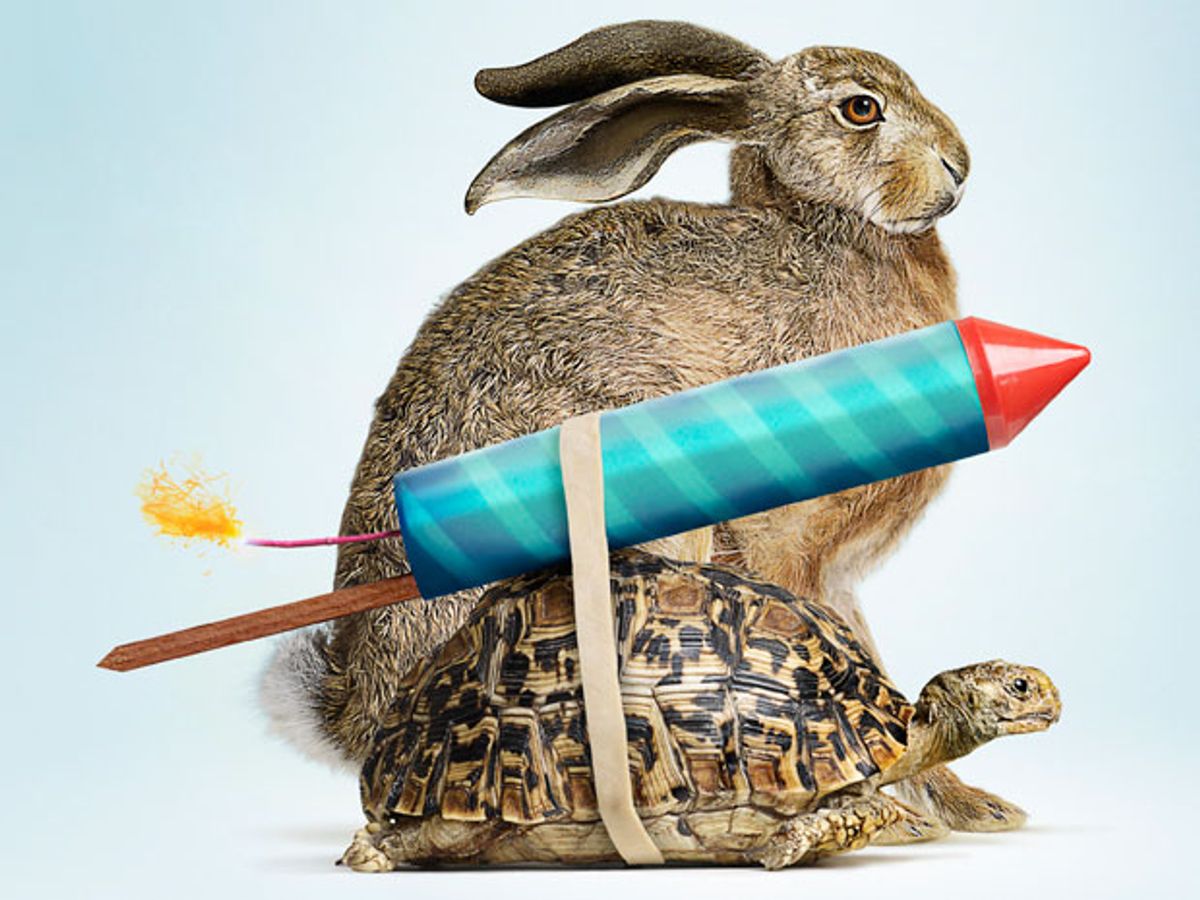The tangled history of innovation reveals a peculiar lesson: Slow is often better than fast.
The current assumption is that innovation at its best hits like a hurricane. Austrian-American economist and political scientist Joseph Schumpeter, who first recognized the importance of innovation for economic growth, famously described innovation as coming in “gales,” sweeping aside all that came before.
But whether it’s biomedical, digital, or electromechanical, systems-level innovation requires human ingenuity, even wisdom. And the wise adaptation of advances in technoscience—in the design, engineering, and management of large knowledge-based systems that deliver energy, information, transportation, security, food, and health—takes time.
Rapid monumental shifts do occur, of course. Think of the speedy switch from wired phones to smartphones, or from TV to streaming video on the Internet, or the quick decline of snail mai l, now replaced by a siege of e-mail, Twitter, and Facebook. But Schumpeter’s gales of innovation often mask slower, deeper changes that are more important, although less obvious. Few monumental shifts render existing technologies obsolete right away, and the social impact of new technologies often takes decades to reveal itself.
In some industries, innovation simply has to be slower. Regulations and litigation aimed at preventing harmful outcomes from new medical therapies and health interventions invariably slow the pace of change in health care. Digital engineers often boast of rapid product releases and the need to “fail cheaply and quickly.” But a badly designed laptop or search engine won’t kill anybody. Makers of new drugs or medical implants, such as hips or pacemakers, are speed averse out of self-preservation.
Energy and transportation systems also change slowly, and not because the engineers and scientists who work on them are out of ideas. The prevalent carbon-based energy paradigm is so complex that seemingly small input substitutions can have enormous negative consequences. For example, biofuels could be used to power automobiles instead of gasoline. Yet when scaled across nations as large as the United States or China, the widespread adoption of biofuels would greatly increase the price of food [PDF], as well as the amount of land needed to grow it, erasing any environmental gains we might make from abandoning gasoline.
Entire systems rarely spring forth fully formed. Drones or robot-controlled aerial vehicles, for instance, seem to have emerged suddenly, with pundits, politicians, and ordinary citizens now wondering how their use will change not only the way war is waged but every aspect of our lives. Yet drones have a long historical tail. Hot-air balloon “drones” were used in the French Revolutionary Wars. The Wright brothers conceived of unmanned aircraft more than 100 years ago. Lawrence Sperry, who perfected the gyroscope, developed a mechanical autopilot in 1912. Electrical engineer Nikola Tesla described a fleet of unmanned aerial combat vehicles in 1915. Almost a century of development on many fronts went by before the drones everyone is now talking about “suddenly” appeared.
Slow innovation doesn’t mean no innovation. What looks to some like an innovation drought may instead be a period of yet-to-be appreciated innovation already under way. Flashy, fast innovation may be sexy; it satisfies investors impatient for a big score in the short term. But for the people who use the technologies that innovation brings about, and for those who engineer them, slow is the way to go.
About the Author
G. Pascal Zachary is a professor at Arizona State University’s Consortium for Science, Policy & Outcomes.
